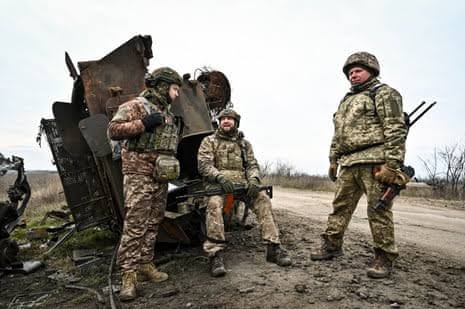Russia has deployed approximately 110,000 troops near the eastern Ukrainian city of Pokrovsk as part of its ongoing efforts to capture the strategically vital location, according to Ukraine’s top military commander.

General Oleksandr Syrskyi described Pokrovsk as the most active and contested area along the 1,200-kilometre (745-mile) eastern front line. Russian forces have been attempting to seize the city for nearly a year, launching a series of relentless offensives. However, despite having superior manpower and firepower, Moscow has so far failed to capture the city.
Pokrovsk holds major strategic value for Russia. It sits along a crucial road and railway line that connects it to other key military centers, including Kostiantynivka, Kramatorsk, and Sloviansk—cities that collectively serve as the core of Ukrainian defense in the Donetsk region, which remains under Kyiv’s control. Although Pokrovsk was home to around 60,000 residents before the war, most have fled since Russia launched its full-scale invasion in February 2022.

The city was also home to Ukraine’s last functioning coking coal mine, which continued operating until early 2025. Once the mine shut down, its remaining workers also began evacuating the area.
President Vladimir Putin has repeatedly expressed his intent to seize full control of the Donetsk and Luhansk regions, which are partially occupied by Russian forces. Kyiv and Western allies accuse Moscow of deliberately dragging out peace negotiations to expand its territorial gains.
According to the U.S.-based Institute for the Study of War (ISW), Ukraine’s defensive strategy in Pokrovsk—particularly its integration of drone warfare—compelled Russia to abandon earlier plans for a direct frontal assault. Ukrainian forces have effectively merged drone operations with ground units, significantly enhancing their resistance.
At the same time, Russia has struggled to reinforce its positions around Pokrovsk due to simultaneous pressure elsewhere. Ukrainian forces launched a surprise incursion into the southern Kursk region of Russia, which reportedly forced the redeployment of nearly 63,000 Russian troops and 7,000 North Korean fighters from the Pokrovsk front.

“This allowed us to weaken enemy pressure on key fronts and regroup our forces. The long-announced capture of Pokrovsk, promised by the Russians in September 2024, has still not happened—largely thanks to our operation in Kursk,” Syrskyi noted.
Rather than continuing direct attacks on Pokrovsk, Russian forces have shifted tactics, attempting to encircle the city from the south and northeast. The ISW’s latest report on Friday highlighted that Russian troops are now launching smaller assaults using minimal units—often just one or two soldiers—employing motorcycles, buggies, and all-terrain vehicles.
In a new statement, General Syrskyi said Russia is still pushing to break through to the administrative border of Donetsk. However, he emphasized that the offensive is driven more by political optics than strategic necessity.
“They are doing this not just for military gains, but to create a psychological impact. They want to symbolically plant the Russian flag, claim another fake ‘victory,’ and promote propaganda about the so-called ‘footprint of the Russian soldier,’” Syrskyi said.




